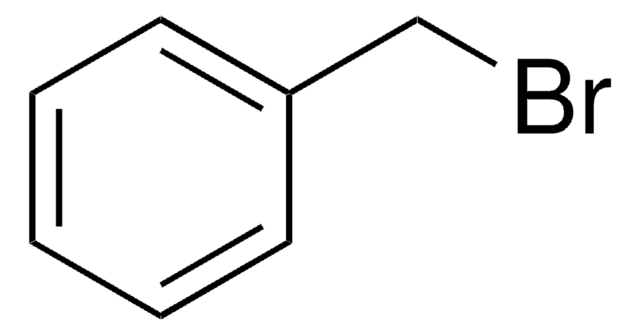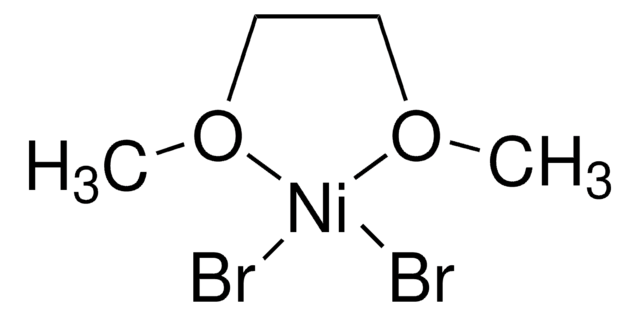209988
Zinc
dust, <10 μm, ≥98%
Synonyme(s) :
Zn
Se connecterpour consulter vos tarifs contractuels et ceux de votre entreprise/organisme
About This Item
Formule empirique (notation de Hill):
Zn
Numéro CAS:
Poids moléculaire :
65.39
Numéro MDL:
Code UNSPSC :
12161600
ID de substance PubChem :
Nomenclature NACRES :
NA.22
Produits recommandés
Pression de vapeur
1 mmHg ( 487 °C)
Pureté
≥98%
Forme
dust
Pertinence de la réaction
core: zinc
reagent type: catalyst
Résistivité
5.8 μΩ-cm, 20°C
Taille des particules
<10 μm
Point d'ébullition
907 °C (lit.)
Pf
420 °C (lit.)
Densité
7.133 g/mL at 25 °C (lit.)
Chaîne SMILES
[Zn]
InChI
1S/Zn
Clé InChI
HCHKCACWOHOZIP-UHFFFAOYSA-N
Description générale
Zinc is an inexpensive, readily available versatile reagent in organic reactions and is commonly used as a reducing agent in organic synthesis. Zinc dust is used to reduce carbonyls, carbon-halide bonds, carbon-oxygen bonds, alkynes, and heteroatom bonds such as N-N and N-O bonds. It is also used to prepare various organozinc reagents. Additionally, Zinc has been used in several well-known named reactions, like the Reformatsky reaction, the Knorr pyrrole synthesis, the Serini reaction, and the Simmons-Smith cyclopropanation.
Application
Reducing agent; used for preparation of organozinc reagents, Reformatsky reagents, and the Simmons-Smith reagent (cyclopropanation).
Zinc is also used as a:
Zinc is also used as a:
- Reductant in the hydrothermal CO2 reduction to formic acid in batch reactors.
- Catalyst in the synthesis of propargylamines by one pot, three component coupling of aldehydes, amines and alkynes in acetonitrile.
Mention d'avertissement
Warning
Mentions de danger
Conseils de prudence
Classification des risques
Aquatic Acute 1 - Aquatic Chronic 1
Code de la classe de stockage
11 - Combustible Solids
Classe de danger pour l'eau (WGK)
WGK 2
Point d'éclair (°F)
Not applicable
Point d'éclair (°C)
Not applicable
Équipement de protection individuelle
Eyeshields, Gloves
Faites votre choix parmi les versions les plus récentes :
Déjà en possession de ce produit ?
Retrouvez la documentation relative aux produits que vous avez récemment achetés dans la Bibliothèque de documents.
Les clients ont également consulté
Nicholas A Isley et al.
Green chemistry : an international journal and green chemistry resource : GC, 2015, 307-307 (2014-12-23)
Alkyl bromides and chlorides can be reduced to the corresponding hydrocarbons utilizing zinc in the presence of an amine additive. The process takes place in water at ambient temperatures, enabled by a commercially available designer surfactant. The reaction medium can
Activated zinc dust
Smith CR
Synlett, 2009(09), 1522-1523 (2009)
Knochel, P.
Chemical Reviews, 93, 217-217 (1993)
Sara Eyal et al.
Journal of nuclear medicine : official publication, Society of Nuclear Medicine, 50(5), 798-806 (2009-05-01)
Studies in rodents indicate that the disruption of P-glycoprotein (P-gp) function increases drug distribution into the developing fetus and organs such as the brain. To simultaneously and serially evaluate the effect of P-gp activity and inhibition on the tissue distribution
A viewpoint about the treatment of Wilson's disease.
Abdul Qayyum Rana et al.
The Canadian journal of neurological sciences. Le journal canadien des sciences neurologiques, 40(4), 612-614 (2013-06-22)
Notre équipe de scientifiques dispose d'une expérience dans tous les secteurs de la recherche, notamment en sciences de la vie, science des matériaux, synthèse chimique, chromatographie, analyse et dans de nombreux autres domaines..
Contacter notre Service technique



